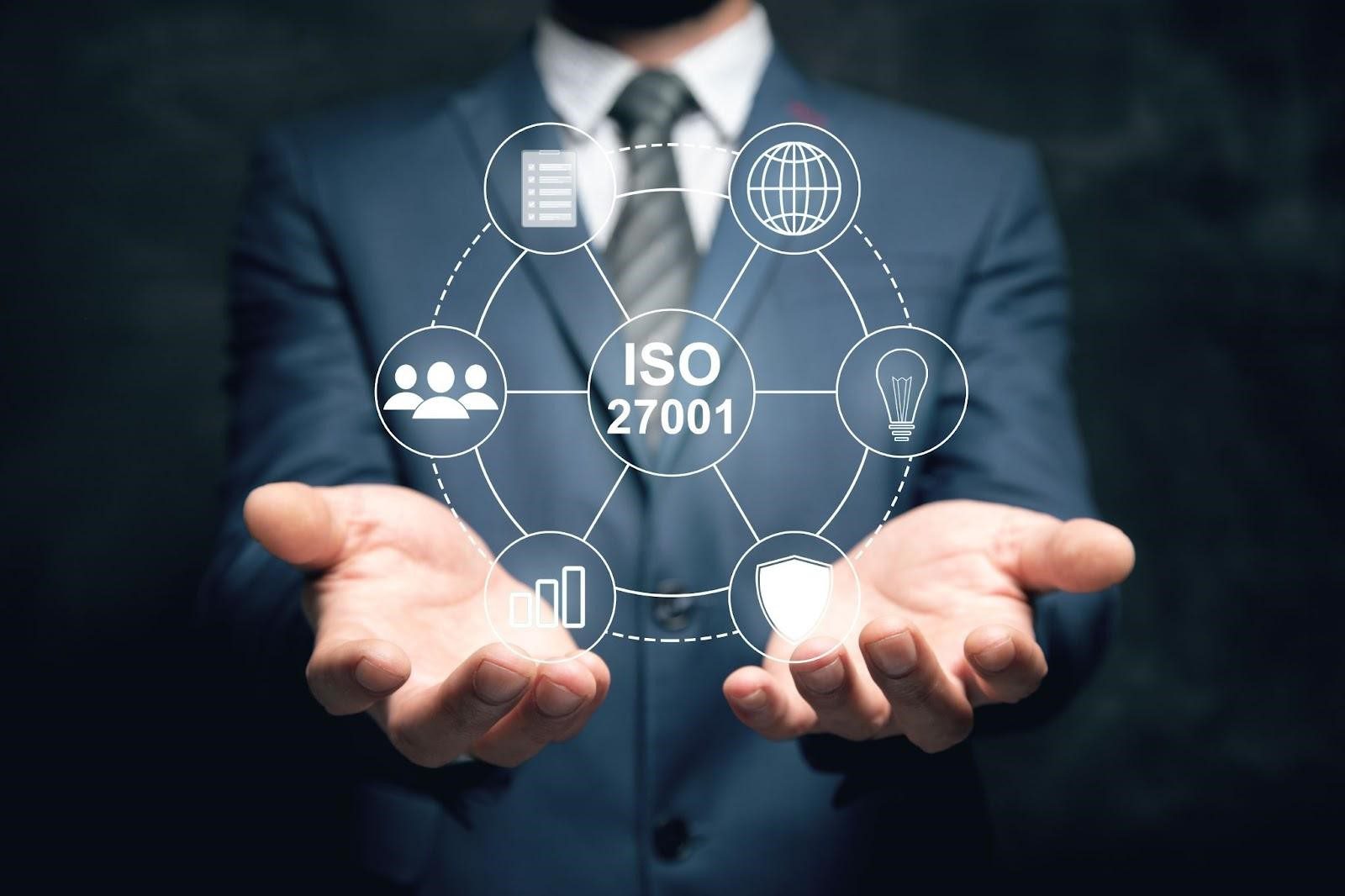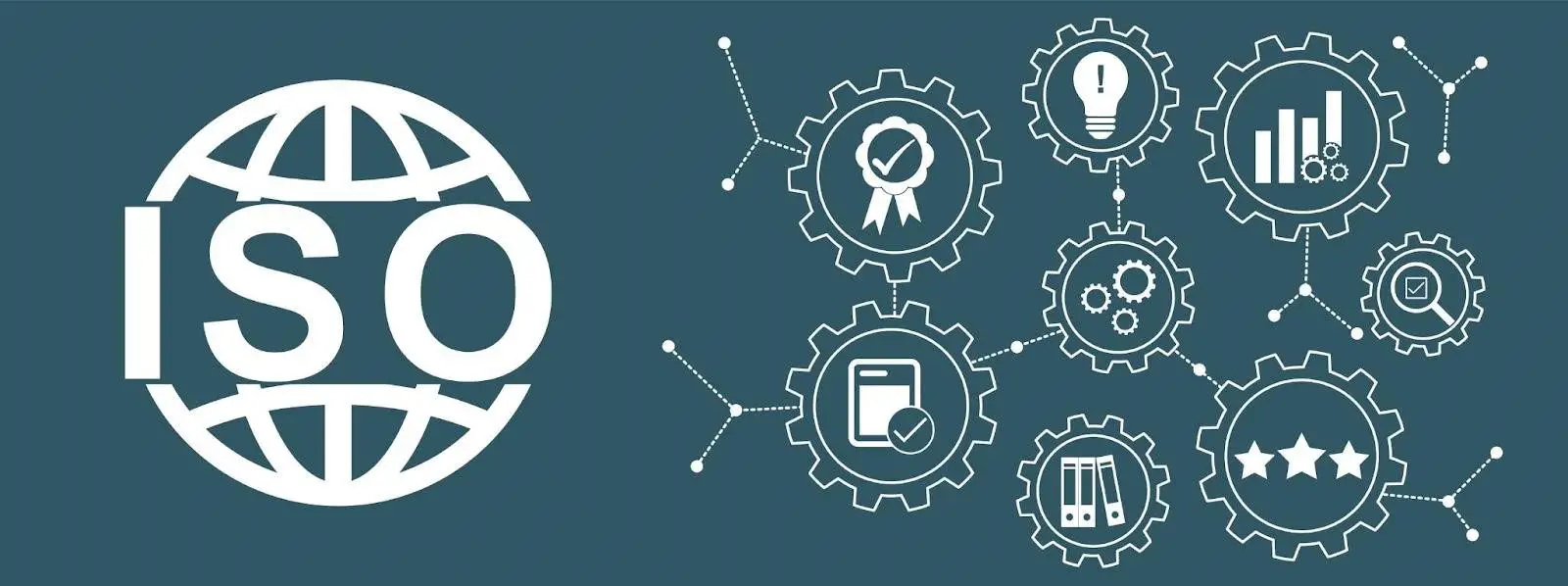
Safeguarding data integrity has become critical for organizations in today’s data-driven world. As businesses navigate through the complexities of information security, ISO 27001 emerges as a widely acknowledged information security standard. It offers businesses a foundation for securing sensitive information.
Establishing and maintaining a robust defense against cyber threats is not merely a best practice; it’s a strategic imperative for modern enterprises.
In this article, we will compare ISO 27001 and other security standards and regulations to help you decide on the right data security standard for ensuring organizational resilience.
What is ISO 27001, and Why is it Important?

ISO 27001 is an information security standard offering a comprehensive framework designed to strengthen organizations against cyber threats. This internationally recognized standard establishes a systematic approach to managing sensitive information, providing a structured foundation for crafting, implementing, and continually improving an Information Security Management System (ISMS).
The Impact of ISO 27001 on Cyber Security Posture
Implementing ISO 27001 goes beyond mere compliance; it transforms an organization’s cyber security posture. By fostering a culture of continuous improvement and risk awareness, ISO 27001 empowers entities to stay one step ahead in the cyber security chess game. The standard not only bolsters defense mechanisms but also instills a proactive mindset, ensuring that organizations can effectively adapt to emerging threats.
ISO 27001 is not just a shield against cyber adversaries; it’s a strategic advantage in an era where safeguarding information is synonymous with safeguarding the core of business operations.
ISO 27001 vs. Other Standards: A Comprehensive Comparison

The following table presents a comprehensive comparison between ISO 27001 and other security standards and regulations to help you get an overview of the standards and their relevance to your organization.
| Characteristics | ISO 27001 | HIPAA | GDPR | SOC 2 | PCI DSS |
| Scope | Organization-wide | Protected health information (PHI) and ePHI | Protection of personal data | Security, availability, processing integrity, confidentiality, privacy | Payment card data |
| International Application | Globally recognized and adopted standard | Primarily application in the U.S. | EU regulation with global implications | Generally applicable but used widely in the U.S. | Worldwide applicability |
| Applicability to Different Industries | Applicable to all industries | Healthcare specific but adaptable to other industries handling PHI and ePHI | Applies to all industries handling personal data | Broad applicability to service organizations | Focused on the payment card industry (Banks, financial institutions, etc.) |
| Controls & Requirements | Prescriptive controls based on risk assessment | Administrative, physical, and technical safeguards | Requires specific technical and organizational security measures | Trust service criteria for evaluating security, confidentiality, privacy, processing integrity, and availability | Details PCI DSS requirements for securing payment card data |
| Certification | Yes | Not required | No formal certification, but compliance is required under penalty | Yes, organizations can seek certification | Yes, required. |
| Certification Frequency | Every 3 years with annual surveillance audits | Not applicable | Not applicable | Annually | Annually |
| Certification Validity Duration | Typically 3 years with annual surveillance audits | Not applicable | Not applicable | Valid for one year | Valid for one year |
Where does ISO 27001 Fit into International Laws on Information Security?
ISO 27001, the international standard for information security management, plays a significant role in aligning organizations with various international laws and regulations related to information security.
Here’s how ISO 27001 aligns with international laws on information security:
1. Global Recognition
ISO 27001 is globally recognized and accepted as a benchmark for information security best practices. Many international laws and regulations acknowledge ISO 27001 as a valuable framework for achieving compliance in information security.
2. General Data Protection Regulation (GDPR)
GDPR, applicable to the European Union (EU), emphasizes the protection of personal data. ISO 27001’s robust framework for managing and securing information aligns closely with GDPR requirements. Implementing ISO 27001 can assist organizations in addressing GDPR’s data protection principles and demonstrating a commitment to safeguarding personal information.
3. Health Insurance Portability and Accountability Act (HIPAA)
ISO 27001’s emphasis on information security controls and risk management can be helpful for organizations in the healthcare sector aiming to comply with HIPAA. ISO 27001 provides a structured approach to protecting sensitive health information and maintaining the confidentiality, integrity, and availability of healthcare data.
4. Cyber Security Frameworks
ISO 27001 aligns well with various cyber security frameworks, including the NIST Cyber Security Framework. It provides a structured approach to managing cyber security risks, enhancing an organization’s ability to safeguard critical infrastructure, data, and systems.
5. International Organization for Standardization (ISO) Standards
ISO 27001 is part of a broader family of ISO standards, including ISO 27002, which provides guidelines for implementing the controls outlined in ISO 27001. These standards collectively contribute to a comprehensive approach to information security that aligns with international best practices.
Factors to Consider in Choosing a Data Security Standard

Here is a list of factors to consider when choosing a data security standard for your organization.
Organizational Size and Structure: Tailor the choice of a data security standard to fit the scale and complexity of your organization. Larger enterprises might opt for comprehensive frameworks like ISO 27001, while smaller businesses may find streamlined options more suitable.
Industry-Specific Requirements: Consider industry-specific standards and regulations. Different sectors have unique data security needs. For instance, healthcare may align with HIPAA, financial institutions with PCI DSS, and technology companies with ISO 27001.
Compliance and Regulatory Considerations: Prioritize compliance with relevant laws and regulations. Ensure the chosen data security standard aligns with your industry’s regulatory landscape. Compliance with standards like GDPR, which transcends industries, is crucial for organizations handling personal data in the EU.
Cost and Resource Implications: Evaluate the financial and resource commitments associated with implementing and maintaining a specific data security standard. Factor in costs for training, technology, and ongoing compliance efforts. Choose a standard that aligns with your budgetary constraints while providing effective security measures.
Enhancing Security: A Multifaceted Compliance Case Study
A leading Tech Firm wanted to strengthen its cyber security posture by simultaneously achieving compliance with ISO 27001, GDPR, and SOC 2. This case study outlines their strategic approach, the challenges faced, and the transformative results attained.
Balancing GDPR’s data privacy requirements with ISO 27001’s comprehensive security measures and SOC 2’s focus on service organizations presented multifaceted coordination challenges for the Tech Firm.
The Firm seamlessly integrated these standards, establishing a holistic security framework. This approach not only streamlined internal operations but also earned the organization a competitive edge in the market.
Benefits
Global Market Access: Compliance with GDPR opened doors to the European market, while ISO 27001 and SOC 2 bolstered the organization’s credibility globally.
Risk Mitigation: The integrated compliance approach enhanced risk management, ensuring proactive identification and mitigation of potential threats.
Competitive Edge: The Firm gained a competitive advantage by differentiating itself as a secure and trustworthy partner in an increasingly security-conscious business environment.
Why Comply with Multiple Security Standards?
In today’s increasing threat landscape, organizations can’t afford to rely on a one-size-fits-all security strategy. Complying with multiple security standards provides a strategic advantage by
Enhancing resilience against diverse threats.
Expanding market reach and client trust.
Demonstrating commitment to best practices in security and data protection.
Ready to enhance your cyber security posture? Schedule a free demo with CyberArrow today to learn how embracing a multifaceted compliance approach can take your organization toward a more secure and competitive future.
FAQs
Which is better, ISO or NIST?
The choice between ISO and NIST depends on specific organizational needs. ISO 27001 is an international standard for information security management, focusing on a systematic approach. NIST, specifically the NIST Cyber Security Framework, is a U.S.-developed set of guidelines emphasizing risk management.
Is ISO the same as SOC?
No, ISO (International Organization for Standardization) and SOC (Service Organization Control) are different. ISO 27001 is a standard for information security management. At the same time, SOC refers to a series of reports (SOC 1, SOC 2, SOC 3) issued by the American Institute of CPAs (AICPA) related to service organizations’ controls.
Is ISO 27001 based on NIST?
ISO 27001 and NIST are distinct frameworks. The International Organization for Standardization developed ISO 27001 and focuses on information security management. NIST develops various frameworks, including the NIST Cyber Security Framework, which offers guidelines for managing and improving an organization’s cyber security risk. While they share common principles, ISO 27001 is not directly based on NIST.